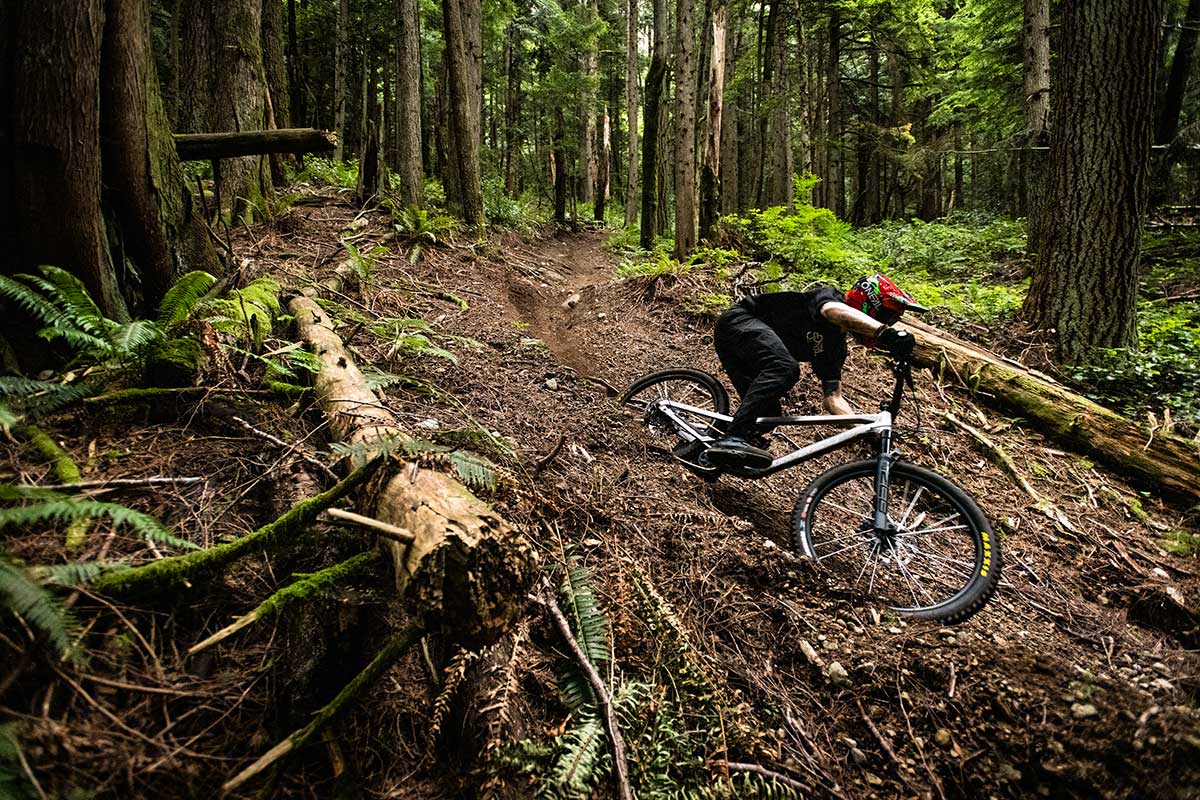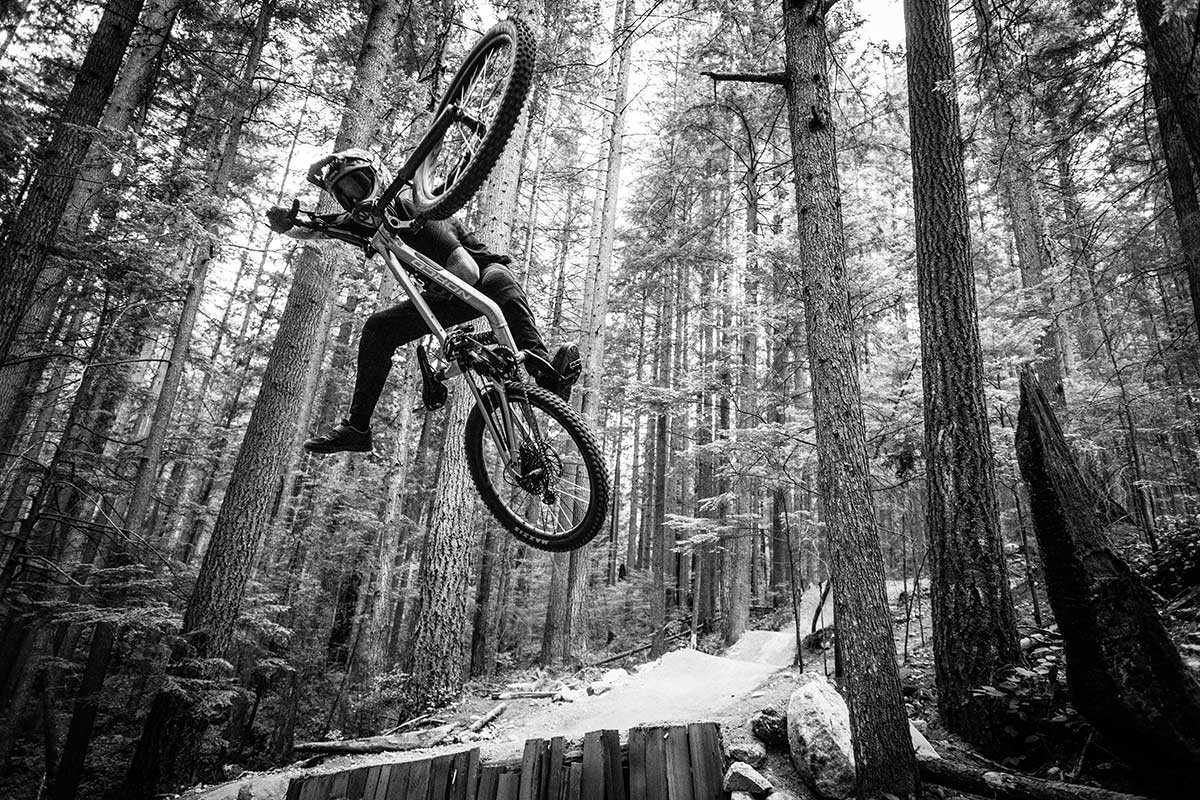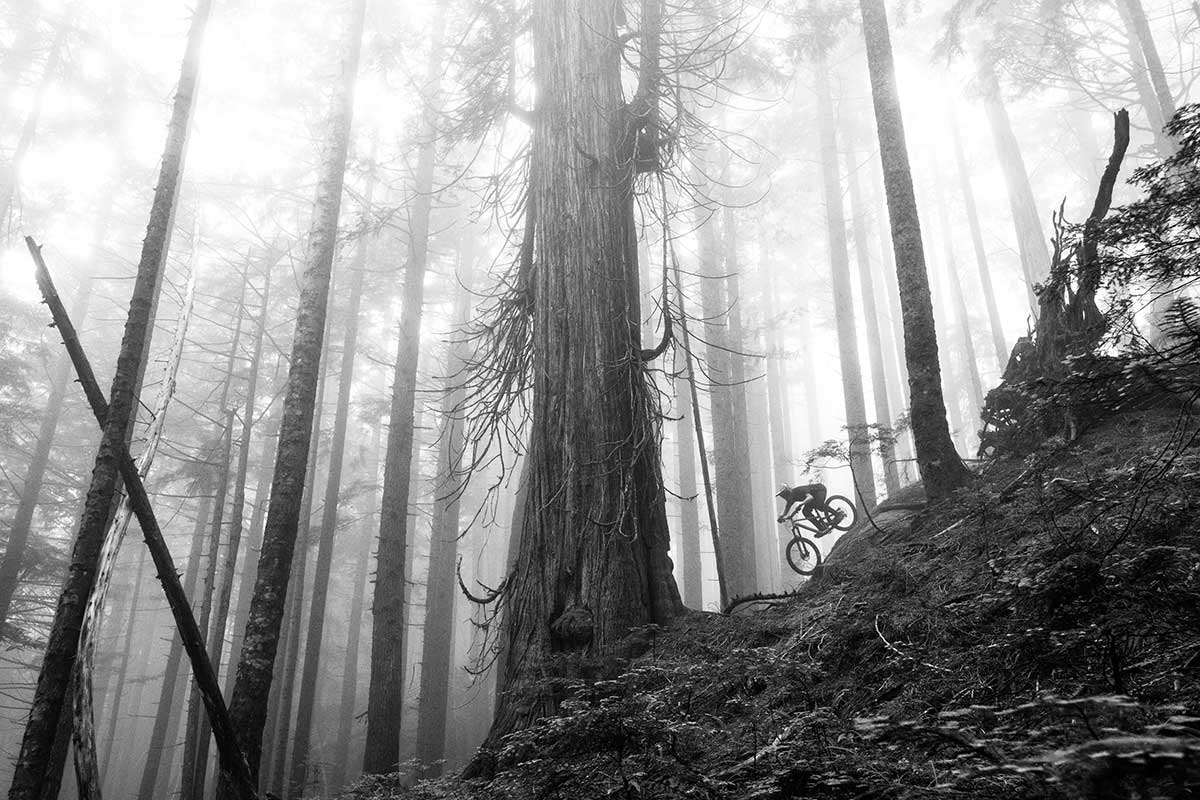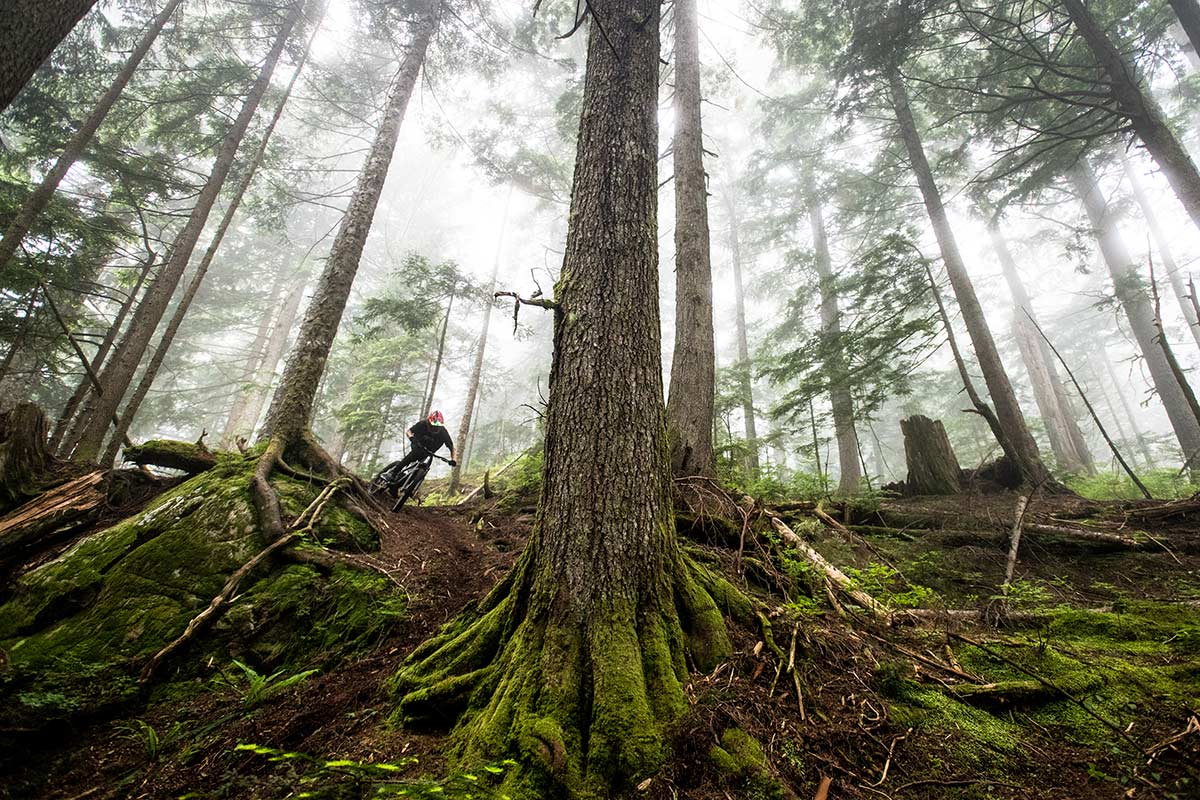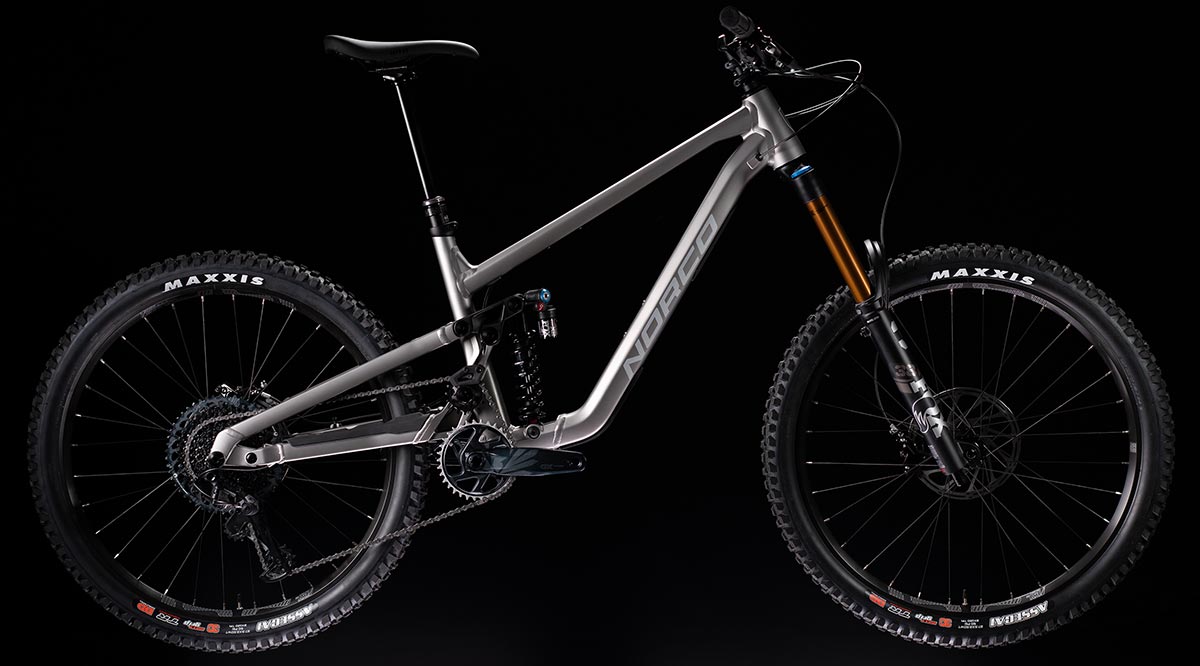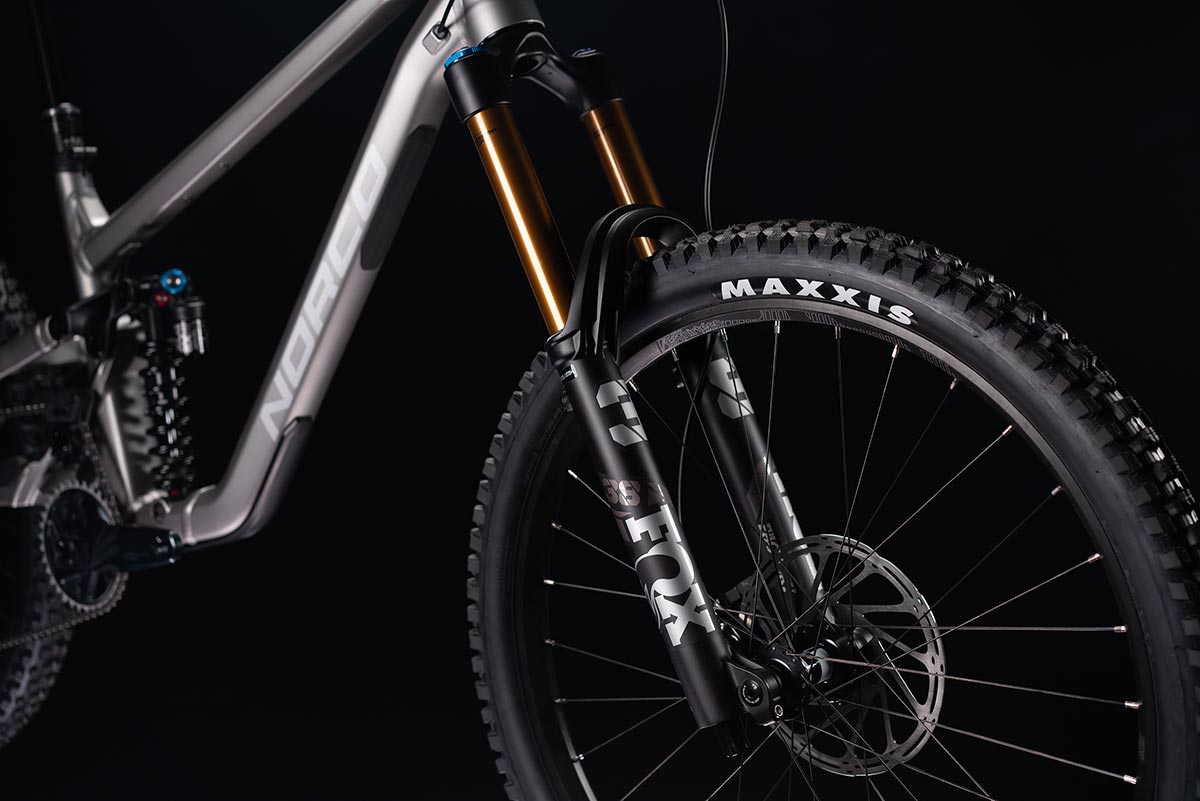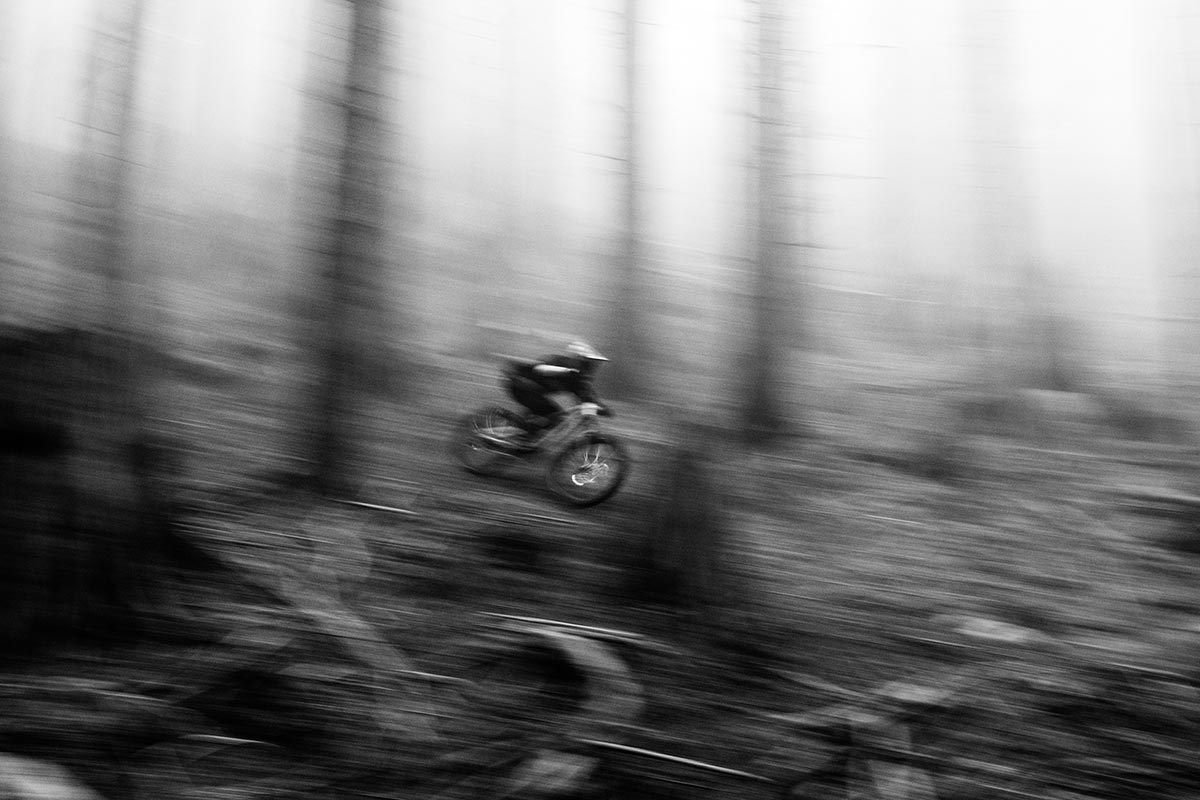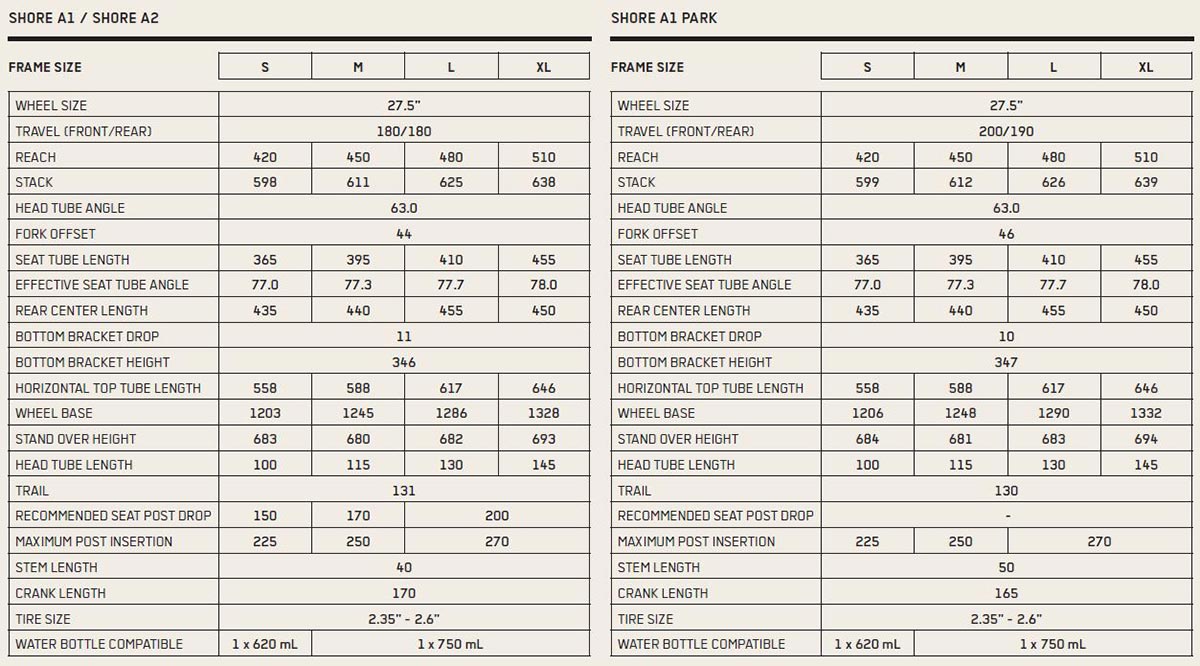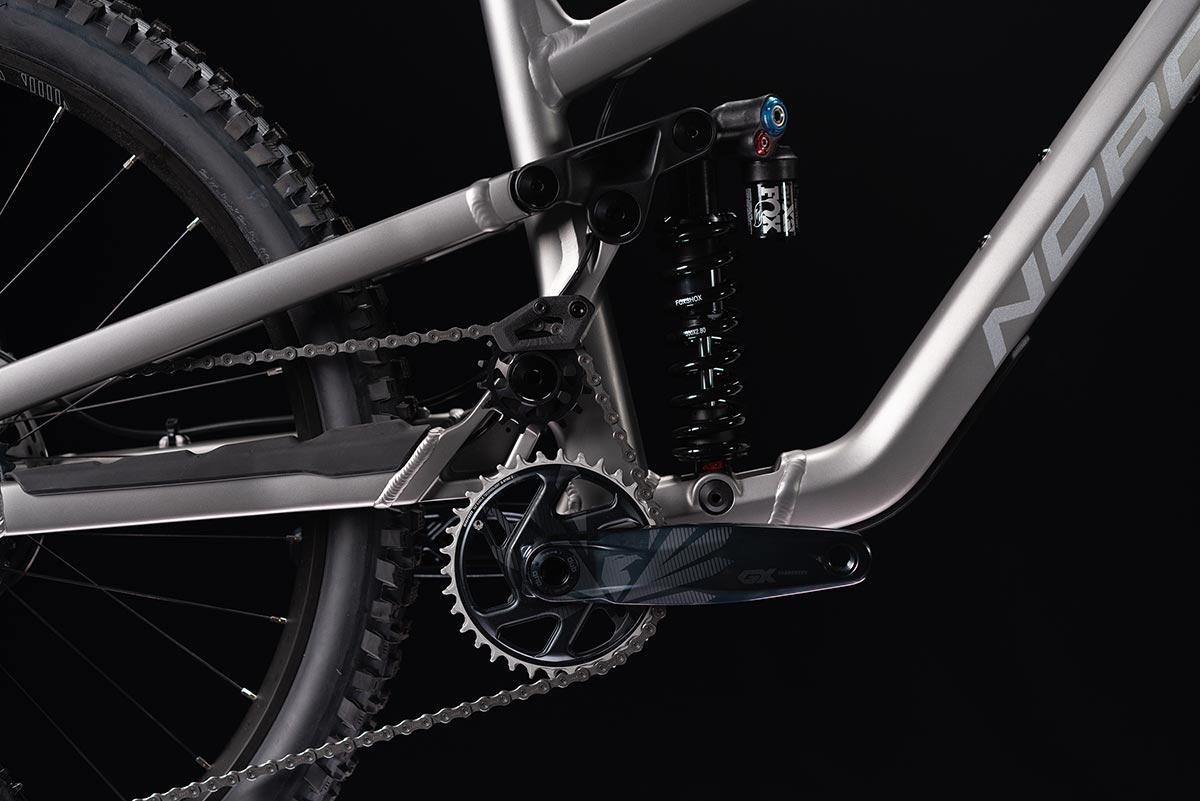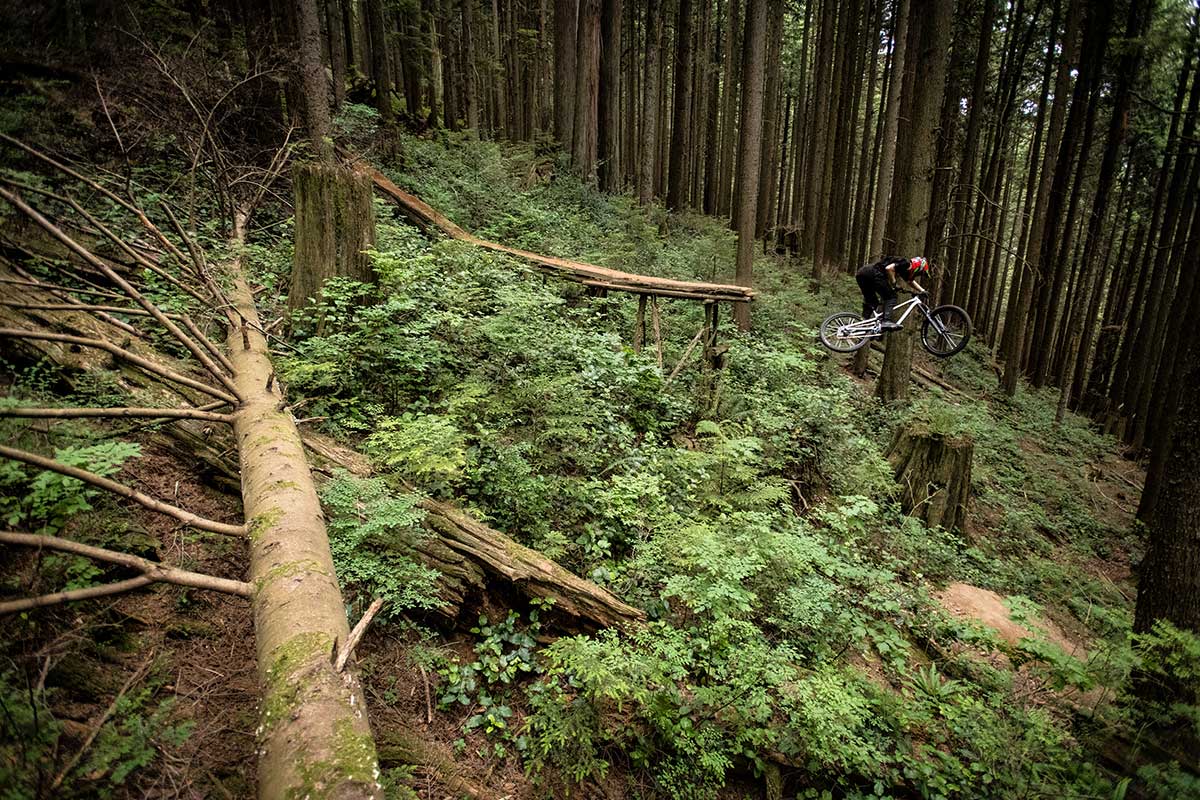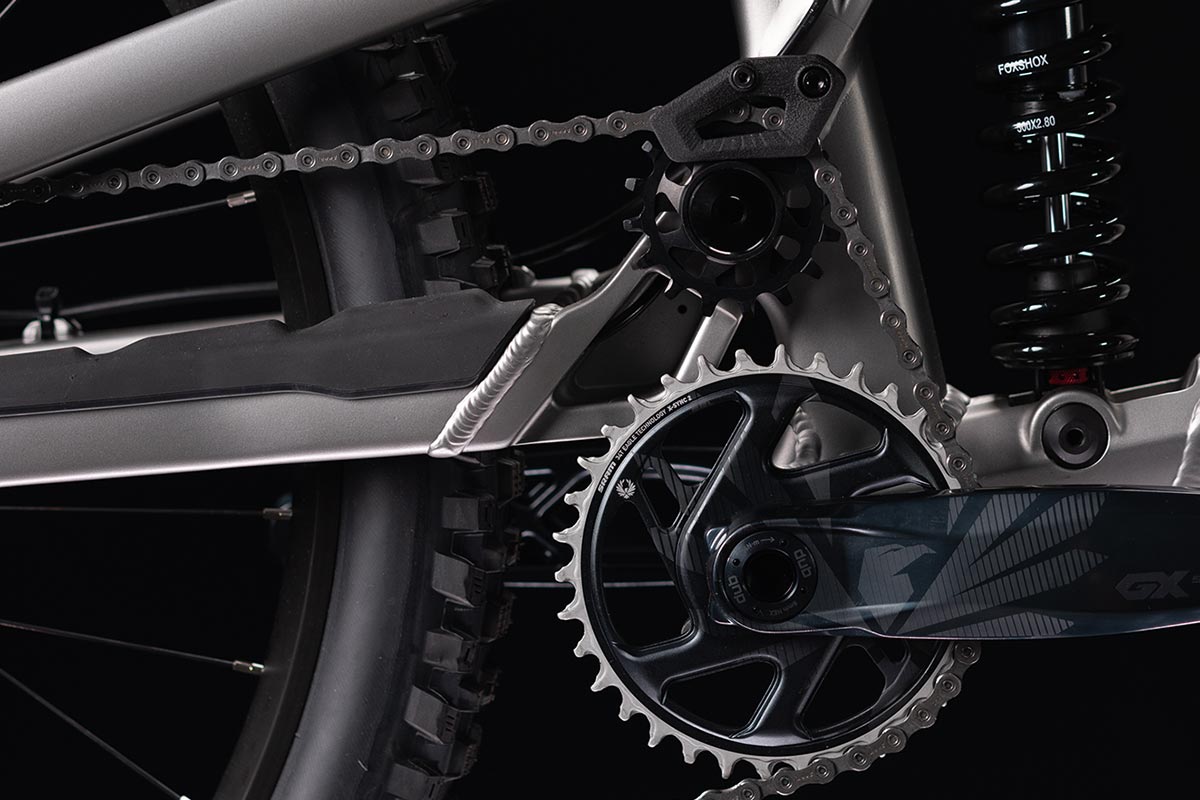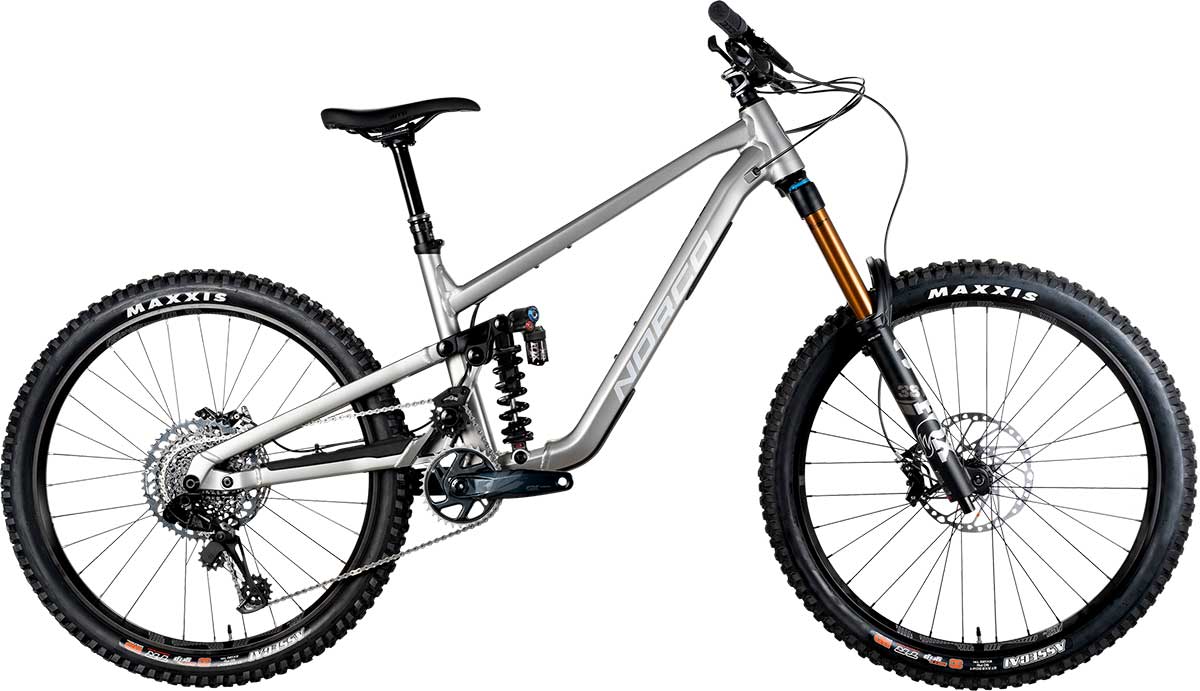After a 20 year hiatus, the Norco Shore is back on the freeride menu. You’ll be glad to hear it no longer features the split seat tube and thus, doesn’t look remotely like the original motor-less motocross bike of 2001. Freeride on the North Shore has come a long way since then, and thankfully, so has bike technology. The new Norco Shore and Norco Shore Park freeride bikes get a trending elevated main pivot with idler pulley, worked into a 180mm/190mm travel Horst Link suspension platform. There’s a lot going on, so let’s dive in.
Norco Shore & Shore Park
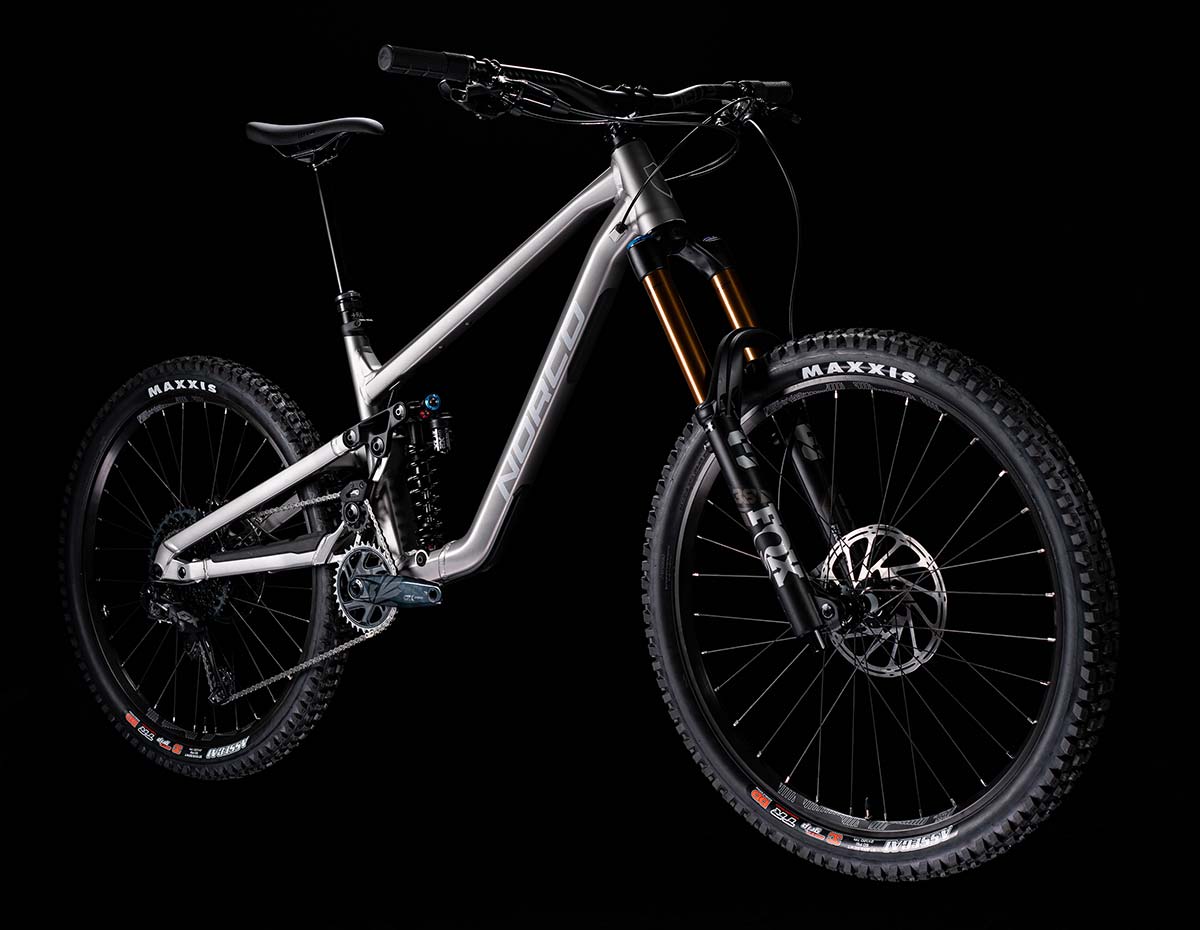
- Intended Use: Big Mountain (enduro?) & Freeride
- Fork Travel: Shore – 180mm, Shore Park – 200mm
- Rear Wheel Travel: Shore – 180mm, Shore Park – 190mm
- Frame Material: Hydroformed Aluminium Alloy
- Wheel Size: 27.5″
The Norco Shore and Norco Shore Park are two long-travel alloy frame high-pivot bikes designed for pushing on. The 180mm travel Shore is spec’d up as a top-end enduro bike would be, with a 12 speed SRAM Eagle drivetrain and 4-piston brakes running 200mm rotors front and rear. This one will get you up the hills as well as down them.
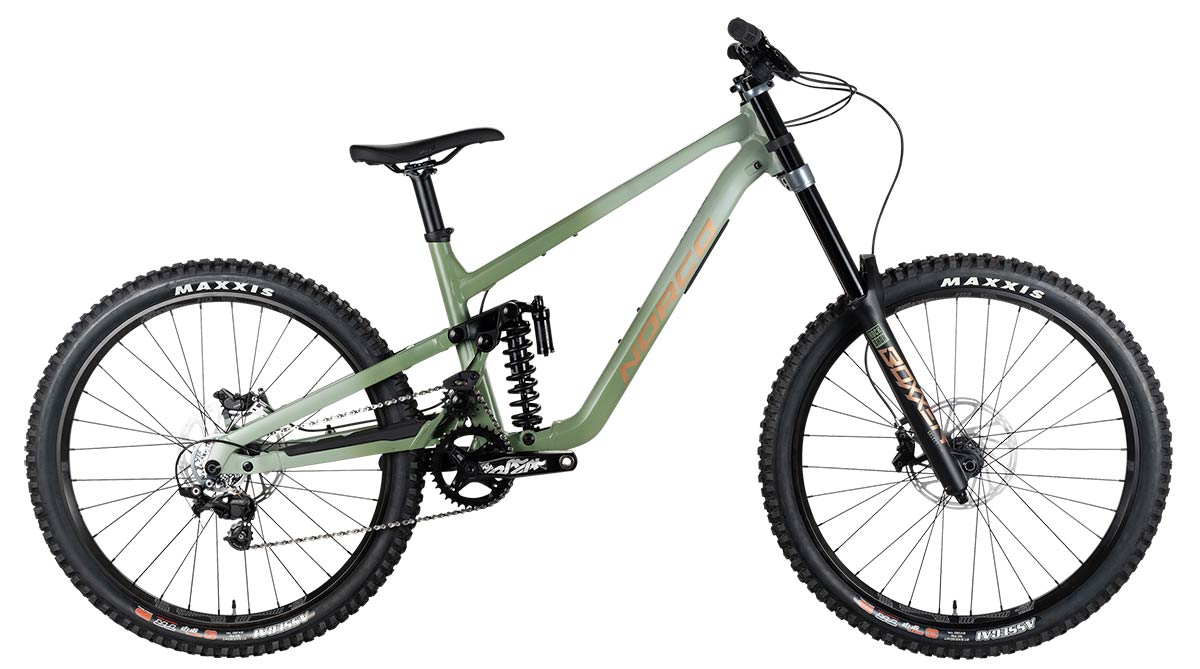
The 190mm travel Norco Shore Park on the other hand, is spec’d up like a DH bike. It gets a 7-speed SRAM DH drivetrain and a 200mm triple-clamp downhill fork. This one is reserved for shuttling, park laps and huge freeride lines.
As such, aluminum makes sense for a bike that is being dumped mid-air when a trick goes wrong, or tossed in the back of a shuttle truck. While carbon does have its place in MTB, freeride isn’t it.

Both iterations of the Norco Shore run a high-pivot suspension platform integrated with a Horst Link. All three models are purposefully spec’d with coil shocks for good reason. The Shore kinematics were designed to take full advantage of the improved sensitivity and consistent spring rate of coil shocks.
Mid-stroke support is designed into the leverage ratio progression and careful selection of damper tunes. While it is of course possible to run an air shock, Norco advise against it, citing that the spring and damper won’t allow the suspension to react as it’s been designed to.
Who is the bike intended for?
“The Shore is designed for riders looking for a confident bike for jumps, hucks and long Big Mountain rides in rowdy terrain where good times and progression are the goal, and stopwatches or finish lines are not even part of the conversation.” – Norco
Freeride Geometry
The Norco Shore and Norco Shore Park freeride bikes are both available in sizes S, M, L and XL. All get a 27.5″ wheelset and no, they don’t offer a mullet. More on that later.
The Norco Shore gets a slack 63° head angle with a middle-of-the-road 44mm offset fork. As we’ve seen on Norco’s recent Sight and Optic trail bikes, the Shore too gets steep effective seat tube angles. It is slackest on the small frame at 77°, steepening up to 78° on the XL. The increased angle as you look up the frame sizing means taller riders won’t migrate towards the rear axle significantly with the saddle in its most upright position.
Reach figures seem very sensible – this is by no means a super compact bike, but reach figures aren’t quite as generous as they could be. The range stretches from 420mm in small, out to 510mm in XL. What we find interesting about the Norco Shore is that the chainstay lengths are different dependent on the frame size. They start short at 435mm in small, growing in 5mm increments to 450mm in XL.
This is pretty cool in terms of the reach to rear-centre ratio. Take the medium frame, for example. It boasts a reach of 450mm and a rear-centre length of 440mm – pretty evenly matched. Just think about that rearward axle path for a moment, and the resulting increase in rear-centre that occurs as the bike goes through its travel. At some point, the reach measurement will match the rear-centre measurement, creating what should be an extremely well-balanced bike front to rear. Our interest is piqued.
Geometry of the Shore and Shore Park is nigh-on identical. Just 1mm separates the two at the BB, stack and trail – all other frame measurements remain equal. The 200mm triple-crown fork features a 46mm offset as compared to the 44mm offset on the Norco Shore.
High-Pivot what now?
There’s a lot of excitement around high-pivot bikes just now. Recent examples include the Deviate Highlander and the Forbidden Druid (and their unnamed long travel version). What’s all the fuss about?
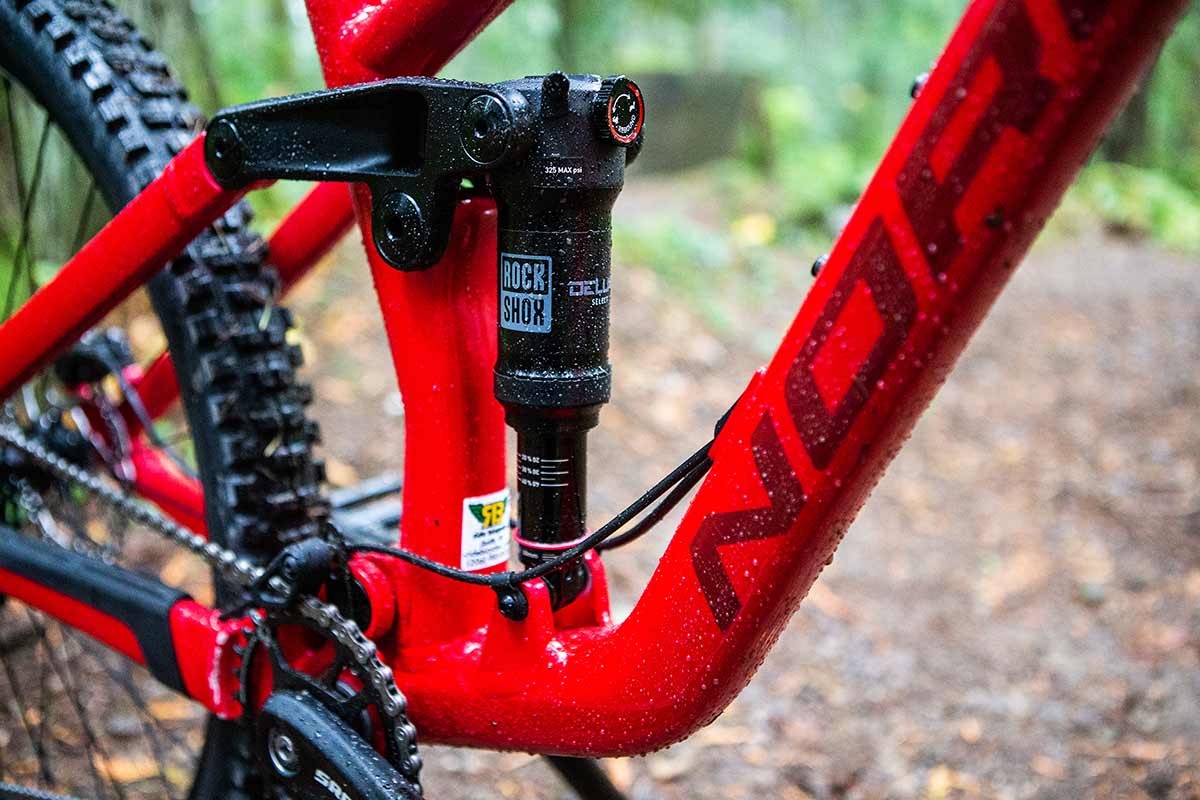
The vast majority of full suspension bikes you see on your local trails have a main pivot positioned in line with the chain line. This means that when the bike is pushed through its rear wheel travel, the rear axle takes an arced path about that pivot, with the net result of the rear wheel moving forwards, shortening the wheelbase.
With a high-pivot bike, that rear axle path is rearward. So, as the bike is pushed through its travel, the rear-centre elongates. As does the wheelbase. So what?
This is an interesting and attractive concept for a couple reasons. First up, that rearward axle path allows the wheel to move with the direction of the impact, rather than against it. As a result, there is a reduction in horizontal force transmitted to the rider allowing momentum to be better maintained.
Secondly, Norco say it also allows for a more supportive suspension setup through leverage ratio progression and greater damper engagement without compromising suspension compliance. To learn more about high-pivot bikes, check out our recent Ask A Stupid Question feature on the very topic, with contributions from Actofive, Deviate, Starling, Commencal and Forbidden.
It’s not all advantageous, however. With the obvious benefits of a rearward axle path comes an unquestionable disadvantage. That elongating rear-centre measurement is a recipe for pedal kickback, and a heck of a lot of it. Enter, the chain idler.
Obligatory Idler Pulley
If you’re not sure what pedal kickback is, be sure to check out Tyler’s in-depth explanation and video here. It occurs when a bike’s rear-centre measurement increases, causing chain growth in the system. Rearward rotation of the chainring has to occur in order to feed more chain towards to cassette – this is felt as pedal kickback.
If, on a high-pivot bike, the chain line was allowed to run its traditional course straight through to the chainring, the chain growth would be substantial. The idler pulley, located concentric to the main pivot, negates this. As the bike is pushed through its rear wheel travel, the length of the top chain line remains consistent, eliminating pedal kickback.
Can I mullet the Norco Shore?
No. Norco say a 29” fork and wheel up front would negatively affect the Shore’s ride quality. The change in head angle and larger wheel diameter would impact the steering geometry while the redistribution of mass would put more weight over the rear of the bike and have a negative effect on kinematic support.
Pricing & Availability
The 180mm travel Norco Shore is available at two price points as the A1 and A2 models. We don’t have said pricing info yet but you’ll have it as soon as we do. Pick up the top-end A1 model to get the raw finish aluminium frame built up with a Fox Factory 38 fork with GRIP2 damper and a Factory DHX2 coil shock. It rolls on an E13 LG1 DH wheelset laced to DT SWISS 350 hubs.
Top-end DH spec SRAM Code RSC brakes provide stopping power while the SRAM GX Eagle drivetrain delivers 12 speed gearing. Maxxis Assegai Max Grip Double Down tires are a very appropriate spec choice for the bike’s intentions.
The cheaper option is the Norco Shore A2. This one will split opinion with its very flash purple-pink frame colorway. Personally, I think it rocks. You get a RockShox ZEB R Charger fork and a Super Deluxe Coil Ultimate DH shock. Shimano’s Deore 12 speed drivetrain propels the bike rolling on an E13 wheelset with Shimano hubset. Brakes are Shimano too – 4-piston for reliable power.
The Norco Shore Park A1 is the only model available. It offers a RockShox Boxxer 200mm fork paired with a Super Deluxe Coil Ultimate DH shock. Surprisingly, Norco have opted to spec the cheaper option SRAM Code R brakes on the Park bike. These are still very powerful and reliable stoppers but they don’t offer the level of adjustability you see on the more expensive RSC.
